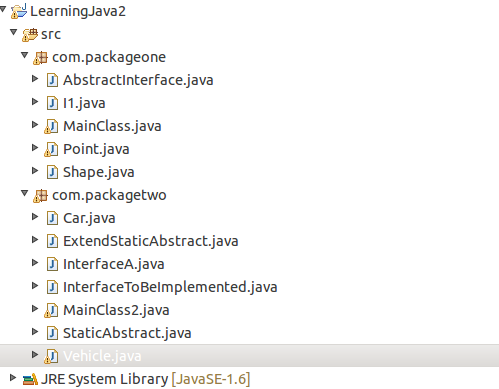Have a look at code here which is self explanatory.
Here is the Layout file containing ListView : activity_main.xml
<?xml version="1.0" encoding="utf-8"?>
<LinearLayout xmlns:android="http://schemas.android.com/apk/res/android"
android:orientation="vertical"
android:layout_width="fill_parent"
android:layout_height="fill_parent"
>
<Button
android:id="@+id/refresh"
style="?android:attr/buttonStyleSmall"
android:layout_width="wrap_content"
android:layout_gravity="center_horizontal"
android:layout_height="wrap_content"
android:text="refresh" />
<ListView
android:id = "@+id/list"
android:layout_width="fill_parent"
android:layout_height="fill_parent"
/>
</LinearLayout>
------------------------------------------------------------------------------------------------------------------------------------
Here is the Activity Class having logic for rotation :
package com.example.rotatelistitems;
import android.app.Activity;
import android.os.Bundle;
import android.view.View;
import android.view.View.OnClickListener;
import android.view.animation.AccelerateInterpolator;
import android.view.animation.Animation;
import android.view.animation.AnimationSet;
import android.view.animation.LayoutAnimationController;
import android.widget.ArrayAdapter;
import android.widget.Button;
import android.widget.ListView;
public class MainActivity extends Activity implements Runnable {
String[] items={"India", "America", "Pakistan", "Afganistan", "Srilanka",
"Paris", "London", "Australia", "Switzerland", "China",
"Japan", "Malasiya", "Singapore", "Thailand", "Italy",
"Russia", "Ukraine", "Germany", "Canada"};
Button refresh ;
/** Called when the activity is first created. */
@Override
public void onCreate(Bundle savedInstanceState) {
super.onCreate(savedInstanceState);
setContentView(R.layout.activity_main);
final ListView flightlist = (ListView)findViewById(R.id.list);
refresh = ( Button )findViewById(R.id.refresh);
flightlist.setAdapter(new ArrayAdapter(this, android.R.layout.simple_list_item_1,items));
refresh.setOnClickListener(new OnClickListener() {
@Override
public void onClick(View v) {
flightlist.post(MainActivity.this);
}
});
}
private Rotate3dAnimation applyRotation(int position, float start, float end) {
// Find the center of the container ,here i have hardcoded the values
final float centerX = 0.0f;//view.getWidth()/2.0f;
final float centerY = 50.0f;//view.getHeight()/2.0f;
// Create a new 3D rotation with the supplied parameter
// The animation listener is used to trigger the next animation
final Rotate3dAnimation rotation = new Rotate3dAnimation( start , end , centerX , centerY , 0.0f , true );
rotation.setDuration(500);
rotation.setFillAfter(true);
rotation.setRepeatCount(3);
rotation.setInterpolator(new AccelerateInterpolator());
rotation.setAnimationListener(new DisplayNextView(position));
return rotation;
}
private final class DisplayNextView implements Animation.AnimationListener {
private final int mPosition;
private DisplayNextView(int position) {
mPosition = position;
}
public void onAnimationStart(Animation animation) {
}
public void onAnimationEnd(Animation animation) {
}
public void onAnimationRepeat(Animation animation) {
}
}
@Override
public void run() {
ListView lv = (ListView) findViewById(R.id.list);
// here animations start
int first = lv.getFirstVisiblePosition();
int last = lv.getLastVisiblePosition();
for (int k = 0; k < last - first + 1; k++) {
View child = lv.getChildAt(k);
// int pos = lv.getPositionForView(child);
child.startAnimation(applyRotation(0,0,360));
}
}
}
This one is the custom Animation class for rotating ChildViews of a list
package com.example.rotatelistitems;
import android.graphics.Camera;
import android.graphics.Matrix;
import android.view.animation.Animation;
import android.view.animation.Transformation;
public class Rotate3dAnimation extends Animation {
private final float mFromDegrees;
private final float mToDegrees;
private final float mCenterX;
private final float mCenterY;
private final float mDepthZ;
private final boolean mReverse;
private Camera mCamera;
public Rotate3dAnimation(float fromDegrees, float toDegrees,
float centerX, float centerY, float depthZ, boolean reverse) {
mFromDegrees = fromDegrees;
mToDegrees = toDegrees;
mCenterX = centerX;
mCenterY = centerY;
mDepthZ = depthZ;
mReverse = reverse;
}
@Override
public void initialize(int width, int height, int parentWidth, int parentHeight) {
super.initialize(width, height, parentWidth, parentHeight);
mCamera = new Camera();
}
@Override
protected void applyTransformation( float interpolatedTime , Transformation t ) {
final float fromDegrees = mFromDegrees;
float degrees = fromDegrees + ( ( mToDegrees - fromDegrees ) * interpolatedTime );
final float centerX = mCenterX;
final float centerY = mCenterY;
final Camera camera = mCamera;
final Matrix matrix = t.getMatrix();
camera.save();
if (mReverse) {
camera.translate( 0.0f , 0.0f , mDepthZ * ( 1.0f - interpolatedTime ) );
} else {
camera.translate( 0.0f , 0.0f , mDepthZ * ( 1.0f - interpolatedTime ) );
}
camera.rotateX(degrees);
camera.getMatrix(matrix);
camera.restore();
matrix.preTranslate(-centerX, -centerY);
matrix.postTranslate(centerX, centerY);
}
}
Change the values and enjoy various behaviour of ListView Animation.
Please do comment if you like my post :)



